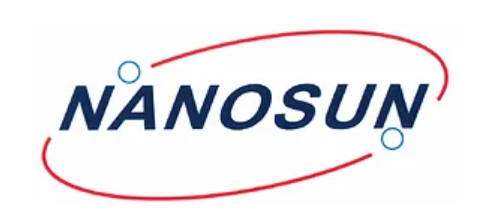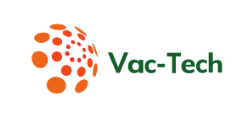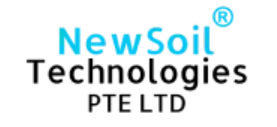| Challenge Owner(s) |
BASF South East Asia, Chevron Oronite, Croda Singapore, Petrochemical Corporation of Singapore, Shell Jurong Island, Singapore LNG Corporation, TP Utilities, U&P
|
|---|---|
| Organiser(s) |
Enterprise Singapore, JTC Corporation, TNB Ventures
|
| Industry Type(s) |
Circular Economy & Sustainability, Energy & Chemicals, Environmental Services, National Innovation Challenges, Sustainable Energy
|
| Opportunities and Support | Testbedding and pilot opportunities with Jurong Island companies; mentorship; grant support |
| Application Start Date | 19 August 2021 |
| Application End Date | 18 October 2021 |
| Website | Click here to learn more |
About Challenge
Jurong Island Innovation Challenge is calling for startups and SMEs to tackle challenges faced by Jurong Island companies and the broader energy and chemicals industry in the areas of energy management, emissions reduction, water management and waste management.
Learn More| Challenge Owner(s) | Croda Singapore, National Water Agency (PUB) |
|---|---|
| Industry Types(s) | Circular Economy & Sustainability, Digital/ICT, Energy & Chemicals, National Innovation Challenges |
Croda Singapore and National Water Agency (PUB)
Current Situation:
Croda’s batch production plant generates wastewaters with the following profiles:
a. High strength waste streams:
- Alkoxylate wastewater of about 30 m3/day, with typical values of 20,000 mg/l [10,000 to 30,000] of total COD and 2,000 mg/l of TDS
- Ester wastewater of about 15 m3/day, with typical values of 75,000 mg/l [30,000 to 200,000] of total COD and 16,800 mg/l of TDS
- Blended wastewater of about 15 m3/day, with typical values of 25,000 mg/l [15,000 to 45,000] of total COD and 3,000 mg/I of TDS
b. Medium strength mixed wastewater stream of about 180 m3/day, with typical values of 8,000 mg/l [6,000-10,000] of total COD and 1,250 mg/l of TDS
Existing on-site WWTP systems comprise Dissolved Air Flotation units and Trickling Filters for biological treatment. Croda is seeking industry proposals to upgrade and/or augment its current wastewater treatment plant and/or to incorporate new technologies that enable the effective treatment of these wastewaters to promote circularity by recovering water and valuable resource for process reuse.
Challenge Statement:
This challenge calls for innovative wastewater treatment solutions for high strength wastewater, to increase water recovery for applications, e.g. cooling tower makeup. The recovered water should minimally meet Croda’s required water quality for process reuse such as cooling tower make up, fire water, main-process water and feed to their RO based plant for boiler feedwater production.
This challenge statement is featured as part of the National Innovation Challenges.
Expected Outcomes:
Ideally, the solution should:
- Treat and recover water from high COD waste stream cost effectively.
- Potentially be developed as a modular treatment system due to space constraint.
- Recovered water should meet required water quality specifications for use in plant processes, e.g. condensers or cooling towers, without affecting the equipment or process efficiency and durability.
- Be easily scaled and adapted for applications to treat similar industrial wastewaters.
- Consider minimisation of energy needs, chemical dosing and waste generation.
- Consider integration of data analytics (e.g. predictive analysis of wastewater profile) to optimise wastewater treatment process, where relevant.
- Consider recovery of valuable resources or materials for reuse, e.g. surfactants and biomaterials.
This challenge calls for innovative wastewater treatment solutions for high strength wastewater, to increase water recovery for applications, e.g. cooling tower makeup. The recovered water should minimally meet Croda’s required water quality for process reuse such as cooling tower make up, fire water, main-process water and feed to their RO based plant for boiler feedwater production.
| Challenge Owner(s) | Chevron Oronite |
|---|---|
| Industry Types(s) | Energy & Chemicals, Environmental Services, Sustainable Energy, Urban Solutions |
Chevron Oronite
Current Situation:
Every year, more than 3,000 tons of solid waste are generated through Chevron Oronite’s manufacturing process to produce detergent additives.
The content of this solid waste typically includes xylene (~50% by volume), liquid products (detergents), lube oil and lime (~30% by volume), and solid sediment (~20% by volume). It has a high degree of flammability due to the xylene content, and a mud-like characteristic with poor flowability.
Solid waste is collected by vacuum trucks and sent for treatment at third-party treatment facilities. However, there are only a few waste-processing companies capable of processing this solid waste due to its poor flowability. During peak periods, solid waste may not be cleared on time, resulting in temporary on-site storage. This raises safety concerns and affects manufacturing throughput.
Challenge Statement:
This challenge calls for an alternative approach to treating solid waste, given special characteristics such as high flammability and poor flowability.
Expected Outcomes:
Ideally, the solution is expected to:
- Recover usable product(s) (e.g. xylene) from solid waste, or generate heat energy to be used in other processes.
- Take into account safety concerns arising from the highly flammable nature of the waste.
- Demonstrate cost-efficiency.
For small-scale testing of toxic industrial waste (TIW) treatment solutions, please consult NEA’s Pollution Control 1 Division (Mark_TAN@nea.gov.sg) on the necessary approval for TIW transportation, storage and treatment.
This challenge calls for an alternative approach to treating solid waste, given special characteristics such as high flammability and poor flowability.
| Challenge Owner(s) | Petrochemical Corporation of Singapore |
|---|---|
| Industry Types(s) | Circular Economy & Sustainability, Energy & Chemicals |
Petrochemical Corporation of Singapore (PCS)
Current Situation:
Every year, a large quantity of spent caustic is generated in the process of producing petrochemical products. This spent caustic often contains mercaptans, sulfide and components such as NaHS, NaHCO3, Na2S, Na2CO3 and NaOH which are odorous.
Typically, spent caustic is extracted from the bottom of caustic scrubbers and washed with gasoline to remove polymers before being sent off-site to the Waste Soda Incineration System (WSIS) for treatment. However, the WSIS is expensive to operate and maintain, and is prone to technical issues (e.g. plugging). During technical disruptions, spent caustic has to be transported via vacuum trucks to external waste treatment companies, which is costly and time-consuming.
Spent caustic can be treated and recycled for better uses (e.g. as a washing chemical in paper & pulp production). However, differences in operating standards and specifications in the paper & pulp industry currently prevent extensive use of recycled spent caustic.
Challenge Statement:
This challenge calls for novel treatment solutions for spent caustic. Other than incineration, how can spent caustic be more effectively treated and potentially recycled for other industrial uses?
Expected Outcomes:
The solution is expected to:
- Be a novel or alternative approach to treating spent caustic (e.g. regeneration of spent caustic that may be recycled in other industries).
- Achieve cost-efficiency (i.e. cost of the solution should be less than the total cost of operating and maintaining the WSIS).
- Process large quantities of spent caustic (Estimated quantity is ~14 KT per year).
Proposals that clearly identify use cases for recycled product(s) and/or secure buy-in from off-takers would be assessed more favourably.
For small-scale testing of toxic industrial waste (TIW) treatment solutions, please consult NEA’s Pollution Control 1 Division (Mark_TAN@nea.gov.sg) on the necessary approval for TIW transportation, storage and treatment.
| Challenge Owner(s) | Shell Jurong Island |
|---|---|
| Industry Types(s) | Circular Economy & Sustainability, Energy & Chemicals, Environmental Services, Urban Solutions |
Shell Jurong Island
Current Situation:
Every month, toxic industrial waste (TIW) is generated in the process of manufacturing chemical products at Shell. This TIW typically includes spent non-halogenated liquid waste, biological sludge from wastewater treatment plant, spent catalysts, and other contaminated solid waste such as insulation waste and metal waste.
Usually, TIW is sent straight for incineration at external treatment facilities. However, the market lacks TIW treatment capacity as well as capability. Due to its highly toxic nature, only a limited number of TIW treatment vendors are authorised to process TIW, resulting in a big gap in meeting TIW treatment demand.
Under normal conditions, Shell’s TIW stream generation is fairly constant and can be cleared on a regular schedule. The problem arises during peak periods (e.g. maintenance periods) when there is a surge in TIW volume which makes it difficult for TIW vendors to adjust their treatment capacity.
Currently, notice of such TIW volume surge is given to TIW treatment vendors several months in advance but this approach does not always work. In such cases, unprocessed TIW has to be stored on-site, incurring high costs as well as posing risks of contamination.
Challenge Statement:
It is believed that TIW can be treated in a more efficient manner and potentially be converted into valuable materials for recycling. Other than sending it for incineration, what other approaches can be employed to more effectively treat TIW? Given its highly toxic nature, are there any cost-efficient techniques to process TIW and recover some valuable materials from it?
Expected Outcomes:
The solution is expected to:
- Be an alternative, cost-efficient approach to treating TIW which can also potentially recover some valuable materials from it.
- Fulfil TIW regulations and other applicable requirements (e.g. SS 603, SS 593), and adhere to requirements in Shell’s Control Framework on Waste Manual.
- Achieve zero environmental non-compliance in relation to environmental impact (e.g. releases and discharges).
- Meet the intent of Shell’s overall Sustainability Ambition in terms of recovery and recycling.
Facilities and fleets required must also adhere to NEA’s governing standards and Shell’s Waste Manual requirements.
For small-scale testing of toxic industrial waste (TIW) treatment solutions, please consult NEA’s Pollution Control 1 Division (Mark_TAN@nea.gov.sg) on the necessary approval for TIW transportation, storage and treatment.
| Challenge Owner(s) | TP Utilities |
|---|---|
| Industry Types(s) | Circular Economy & Sustainability, Energy & Chemicals, Environmental Services, Urban Solutions |
TP Utilities
Current Situation:
CBFA is a by-product of burning coal and biomass in the boiler to supply steam to petrochemical customers and for power generation. Up to 25,000 tons of fly ash is produced every year, which cannot be sent to landfill as mandated by NEA. Fly ash is stored in silos for discharge into tanker truck for collection. However, storage silos have limited capacity while fly ash is produced daily and requires regular offtake. Fly ash has proven applications in cement production overseas. However, due to different operating conditions in Singapore, the fly ash does not fully comply with SS EN197-1, and only a small percentage of fly ash can be used in cement production. Specifications of fly ash:
- Volume: Up to 25,000 tons per year

- Meets the Recommended Acceptance Criteria for Industrial Waste for Landfill disposal with the Toxicity Characteristic Leaching Procedures: EPA Method 1311
Challenge Statement:
Fly ash utilisation is limited, despite its application in cement production. The fly ash cannot be sent to landfill and on-site storage generates environmental and storage issues. This challenge seeks solutions to recycle fly ash and exploit its full potential value.
Expected Outcomes:
The solution is expected to:
- Either (i) treat and convert fly ash (e.g. reduced toxicity or leachability) into a recycled material that meets regulatory and industry standards, if applicable, for useful applications, e.g. EN197-1 for cement production, or (ii) explore alternative use of fly ash for novel purposes.
- Consider the nature of the fly ash generated, i.e. through burning coal, and biomass.
- Be cost-effective and sustainable, e.g. consider minimising water, energy or chemical usage.
Proposals that clearly identify use cases for recycled material and/or secure buy-in from off-takers would be assessed more favourably. Interested applicants may consider forming partnerships or consortiums to address the challenge statement.
For small-scale testing of toxic industrial waste (TIW) treatment solutions, please consult NEA’s Pollution Control 1 Division (Mark_TAN@nea.gov.sg) on the necessary approval for TIW transportation, storage and treatment.
| Challenge Owner(s) | U&P, BASF South East Asia |
|---|---|
| Industry Types(s) | Energy & Chemicals, Environmental Services, Urban Solutions |
U&P and BASF South East Asia
Current Situation:
In the process of tank cleaning, a typical waste stream would contain a large amount of methanol solvent together with other chemicals such as metilox, triester and IX1010. There would also be traces of other solvents like IPA and iso-octanol.
Currently, methanol (99.9% purity) is recovered from the chemical waste through a solvent recovery unit which consists of reboiler, condenser stripping and rectification sections. The recovery process leaves behind a large volume of highly viscous chemical residue which needs to be disposed and incinerated.
Nevertheless, there remains valuable resources in the waste residue that could be further processed for recovery of usable chemical materials. For instance, metilox in the residue, if recovered, could be used as an antioxidant additive to enhance performance of lubricant oil.
Challenge Statement:
The industry currently lacks the capability to further process waste residue to recover meaningful contents (e.g. metilox, triester) from the residue. Further recovery of such useful chemicals would not only alleviate the issue of wastage, but also present a significant business opportunity, e.g. reducing incineration cost and generating extra revenue from recovered chemicals.
This challenge calls for a novel separation technique that could be employed to process tank cleaning waste residue for recovery of valuable materials.
Expected Outcomes:
- The solution is expected to recover valuable materials from tank cleaning waste residue (e.g. metilox, triester).
- Recovered materials should meet specifications required to be blended with U&P’s in-house lubricant products for sale as commercial products. At this moment U&P is not able to provide specifications for the recovered metilox.
- Treatment & recovery process should be able to operate in batch process with minimal manpower requirements, e.g. through use of automation.
For small-scale testing of toxic industrial waste (TIW) treatment solutions, please consult NEA’s Pollution Control 1 Division (Mark_TAN@nea.gov.sg) on the necessary approval for TIW transportation, storage and treatment.
| Challenge Owner(s) | Croda Singapore |
|---|---|
| Industry Types(s) | Energy & Chemicals, Sustainable Energy, Urban Solutions |
Croda Singapore
Current Situation:
Croda Singapore has a batch manufacturing plant utilising a number of energy intensive processes. Currently, a significant portion of energy is consumed by boilers to generate steam for chemical processes and line tracing. However, steam boilers have high energy consumption and low energy efficiency.
Challenge Statement:
Croda is seeking innovative technologies or solutions that can improve energy efficiency for their chemical processes and line tracing. Some techniques to optimise these processes (e.g. use of steam traps) have been implemented, but energy savings are limited.
Expected Outcomes:
With the target to reduce carbon footprint by 50% in 2030, Croda is open to explore technologies or solutions that could significantly reduce energy usage in their existing steam/thermal boilers or chemical processes.
Solutions could look at modular technologies, high efficiency boiler replacement (> 95% efficiency), or a change in how energy is supplied to maintain the temperature of products in the lines.
| Challenge Owner(s) | Croda Singapore |
|---|---|
| Industry Types(s) | Circular Economy & Sustainability, Energy & Chemicals, Sustainable Energy, Urban Solutions |
Croda Singapore
Current Situation:
Croda Singapore operates batch processes for manufacturing of specialty chemicals (e.g. used in health and beauty) and engine lubricants.
The batch reactions (~duration of 4-5 hours) are exothermic and require active cooling (e.g. fin fan and water-cooled heat exchangers) to maintain reaction temperatures at ~150 oC.
At present, heat rejected from the process accounts for ~7% of Croda’s carbon emissions.
Challenge Statement:
As part of its sustainability efforts, Croda is seeking innovative technologies or solutions to recover and utilise low-grade waste heat generated from batch processes to improve its overall energy efficiency.
Expected Outcomes:
Ideally, the solution is expected to:
- Demonstrate cost-efficiency with a short payback period (less than 5 years)
- Minimise equipment footprint with modular design to easily scale the technology around the site.
Other considerations:
- Heat production is intermittent due to the nature of the batch process.
- Potential use of advanced materials (e.g. phase change materials) for thermal energy storage.
| Challenge Owner(s) | Singapore LNG Corporation |
|---|---|
| Industry Types(s) | Circular Economy & Sustainability, Energy & Chemicals, Sustainable Energy |
Singapore LNG Corporation
Current Situation:
Seawater is currently discharged into the sea after being used for regasification of LNG.
Energy from discharged seawater can be harnessed via hydro-turbines or other technologies. Existing solutions such as micro-hydrokinetic turbines have been considered but are not cost-efficient.
Challenge Statement:
SLNG is seeking cost-efficient and innovative technologies or solutions to utilise discharged seawater in the seawater channel to generate power for use within the Terminal.
Expected Outcomes:
Cost-efficient and innovative technologies or solutions to harness energy from discharged seawater (e.g. hydroturbines).
Other considerations include:
- Any new system implemented shall not affect gas supply send-out reliability.
- Patentable design (if possible).
- Application of solution to other plants and/or terminals in Singapore with flowing channels.
- Solution needs to be economically viable in terms of cost and payback period.
- Solution should consider ease of maintenance (e.g. minimising fouling or human interface).
- Minimum sea water depth for deployment: 1 meter.
- Minimum cut in speed: 1m/s.
- Minimum freeboard requirement (i.e. difference between seawater level in seawater channel and top of seawater channel structure): 0.5m
| Challenge Owner(s) | Singapore LNG Corporation |
|---|---|
| Industry Types(s) | Energy & Chemicals, Urban Solutions |
Singapore LNG Corporation
Current Situation:
During jetty vessel operations such as gas up cool down (GUCD), the return gas from the vessel is directed to flare when the return gas composition does not meet the Terminal’s stringent requirement for return to the cryogenic LNG recondensation system.
The current criteria for directing the vessel return gas back to Terminal is:
- C1 > 80%;
- N2 < 5%;
- CO2 < 0.1%;
- Temperature < -30°C
~44% of the vessel return gas meets the above criteria and can be directed back to the Terminal, with the remaining 56% directed to flare.
The CO2 criteria of < 0.1% was identified as one of the major limiting factors of directing the return gas back to the Terminal. This stringent requirement is due to the need to return the gas to a cryogenic recondensation system (i.e. CO2 solidification concern).
However, based on data analysis of the gas sent to flare, it was determined that as much as 71% of the flare gas has suitable composition for potential re-utilisation, i.e.
- C1 > 80%
- N2 < 5%
- CO2 < 5%
This quantity that may be re-utilised corresponds to approximately 2,800 tonnes of C1 per annum, potentially increasing to 4,200 tonnes of C1 per annum by 2035 from increasing GUCD operations.
Challenge Statement:
With the expected increase in GUCD operations, it is important for SLNG to explore an alternative approach to re-utilisation of the vessel return gas in lieu of flaring.
Potential innovative technologies or solutions could include:
- Connecting and directing the flare gas to potential end-users (e.g. power plants, gas turbines, boilers on Jurong Island).
- Fuel cells.
- Applications or treatment solutions that could improve the vessel return gas uptake during GUCD by the Terminal, hence reducing or eliminating flaring from GUCD operations.
The solution(s) will need to take into account the intermittent nature of the GUCD operations (approximately 40 – 60 operations a year, 24 – 36 hours per operation), as well as the fluctuating return gas flow rate (between 5 – 30 tonnes per hour during the operation).
Expected Outcomes:
SLNG would like to seek solutions for utilisation of the vessel return gas that is currently directed to flare.
These should provide demonstrable design maturity, with due considerations of operability on the vessel return side (SLNG) as well as the flare gas end-user side.
The developed solution should address the measurement, gas analysis, and flare gas return and logic control integration from both the vessel return side (SLNG) as well as the flare gas end-user side. This will need to consider the operating nature and gas requirements from both ends.
Other considerations include:
- Any new system implemented should not affect gas supply send-out reliability of the Terminal.
- Patentable design (if possible).
- Applicability of the solution to be applied to other LNG regasification terminals offering GUCD ancillary services.
Proposals that clearly identify use cases for return gas utilisation and/or secure buy-in from potential end-users would be assessed more favourably.
Congratulations To Our Winners and Finalists!

Nanosun
Matched with Challenge Statement Owner CRODA and PUB (Industry Track)
Nanosun is a Singapore based membrane manufacturing company with its own highly competitive research and development (R&D) team. With more than 20 years' research experience and technological accumulation in the multifunctional nano composite membrane and water industry, Nanosun is one of the only few companies that is able to manufacture a wide range of multifunctional nano composite membranes for removing micropollutants from drinking water, water reuse and desalination pre-treatment.
Addressing: Waste and Water Management - Waste recovery from high strength wastewater

Vac-Tech
Matched with Challenge Statement Owner Chveron Oronite (Enterprise Track)
Established in 1995, Vac-Tech over the last 20 years of operation, has progressively improved and transformed into a specialist in a variety of industrial services, hazardous waste treatment services and hazardous waste transportation services. The company is now a recognized market leader both locally and regionally with one of the largest specialized workforce, deploying the latest automated technologies in Integrated Plant Maintenance Services (IPMS).
Addressing: Waste and Water Management - Development of treatment process for solid waste

Mencast
Matched with Challenge Statement Owner Singapore LNG (Enterprise Track)
Mencast Holdings Ltd. and its subsidiaries (“Mencast” or the “Group”) is a regional Engineering and Maintenance, Repair and Overhaul (“MRO”) solutions provider. They also have growing business in waste remediation, recycling and manufactured products.
Addressing: Emissions Reduction and Energy Management - Recovery and utilisation of vessel return gas

New Soil Technologies Pte Ltd
Matched with Challenge Statement Owner Tuas Power (Enterprise Track)
Newsoil Technologies is a Singapore founded company that converts excavated soft clay into Pellet-like-Material (PLM). PLM is engineered soil, an alternative for good earth or fill materials which can be used for backfilling, reclamation filling, caisson filling and temporary access road works.
Addressing: Waste and Water Management - Recycling of coal and biomass fly ash (CBFA) for productive use
Ocean Pixel
Matched with Challenge Statement Owner Singapore LNG (Enterprise Track)
Ocean renewable energy consultancy, project management, feasibility studies, project developer; site, resource and device studies, data acquisition, GIS decision support, site-device matching, business matching, technology matching and project-stakeholder matching.
Addressing: Emissions Reduction and Energy Management - Power generation via discharged seawater

Sobono Group
Matched with Challenge Statement Owner Singapore LNG (Enterprise Track)
Sobono Group is an organization that provides an array of renewable energy options and help them support to reduce carbon footprints within the organization by providing scalable, comprehensive and clean energy products and solutions. Bringing a positive impact to the environment such as climate change from energy and fuel consumption, water and soil depletion, and acidification. Concurrently, we invest on a long-term growth objective with an increased emphasis on the South East Asia region.
Addressing: Emissions Reduction and Energy Management - Recovery and utilisation of vessel return gas
Sign up for the latest innovation updates
Customise your preferences to receive updates in industries you're interested in.
6a1b3d5bfa524495a47058726a27931a.jpg?sfvrsn=c84979d4_0)